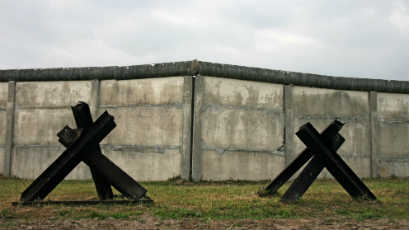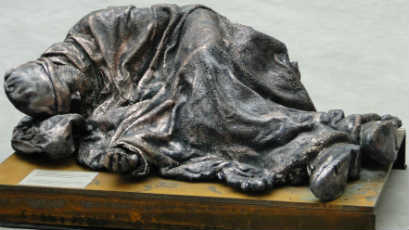Asset Publisher

Abolishing the death penalty in Europe
1980-1997
Allard PLATE

In the summer of 2001, just three weeks before my retirement, I watched aghast as the Twin Towers of the World Trade Center in New York dissolved in a heap of dust before my eyes. It seemed to me at the time that I was witnessing the futility of all my own efforts of the past 30 years. It seemed that everything I had worked for, everything I had done in the defence of human rights in Europe was in danger of crumbling away. This appalling event did not take place on European soil, but it might just as well have done. It was watched over and over again, in each and every village and town on this as well as all the other continents of the globe. Having spent 30 years working towards the abolition of the death penalty in Europe, I greatly feared the impact this event would have on the ideals of the Organisation to which I had dedicated my life.
At the end of the 1960s, at the time when I had first begun to work at the Council of Europe, the Organisation had just started to produce its first comprehensive intergovernmental work programme with the aim of making its activities more systematic, more coherent, and also better known to the public at large. These activities, as I recall, were presented in an attractive booklet called “Man in a European society”, a title which it would be difficult to deploy today! The document contained chapters on the Council’s main fields of work with subheadings to indicate which ones had been proposed and which had been already decided upon. In the chapter on legal co-operation there was also a small subheading on abandoned activities, an area which was no longer considered worth pursuing. Only one was listed: the abolition of capital punishment.
I was as shocked as others to read this, but could not ignore the underlying message. The Committee of Ministers clearly had no intention of debating or reassessing the question of the death penalty. Reasons were not given but were easy to guess. Certain member states not only still included the age-old penalty on their statute books, but were applying it as well. These states included some of the most important in Europe: France, Turkey and the United Kingdom. Given the need for consensus on change, it seemed there would be little chance of common action on this thorny issue.
If the Committee of Ministers were not going to take up the challenge, the ball was clearly in the Assembly’s court because, unlike the former, the latter is able to take decisions by majority vote. Since it was a legal and a human rights matter, the question of capital punishment was therefore put on the agenda of my Assembly committee, and thus to become my responsibility – for the next 30 years. During all that time, I had the good fortune of being assisted by some young and very brilliant co-secretaries such as Etienne Reuter, Enrico Grillo-Pasquarelli and Tanja Kleinsorge, all of whom were firm believers in abolition. They prepared excellent drafts, which the Assembly’s rapporteurs were only too happy to accept for their reports. There were also outstanding contributions submitted by certain non-governmental organisations, such as Amnesty International. But even so, this did not mean that matters unfolded smoothly.
It was the Swedish delegation that first got the ball rolling in the Assembly. Sweden was one of the few European states fortunate enough to have stayed out of the two world wars and to have avoided the miseries of dictatorship. Its society, moreover, had thrived without any need for capital punishment. And so it was natural that the Swedish delegation should believe that their model of a death-penalty-free society could fit the whole of Europe. It was also logical as well as advantageous that the Committee on Legal Affairs and Human Rights should appoint a Swedish rapporteur – Bertil Lidgard – who was a member of the conservative group and could be expected to bring some influence to bear upon his colleagues on the right side of the political spectrum. The conservative camp, after all, was where one would expect to find the most active opponents to abolition.
However, in spite of all the gallant efforts made by Mr Lidgard and the numerous colleagues who supported him, by the end of the 1960s and early 1970s nothing had been achieved in this regard, whether at committee level or on the Assembly floor. The arguments for and against capital punishment had long since been formulated and had not changed much over the years. Academics considered the debate as “intellectually worn out” and the question had assumed a psychological and emotional rather than political nature. The time was evidently not yet ripe for the abolition of the death penalty.
If you wish to continue your reading, you may buy the book "Europe: a human enterprise".
Allard PLATE
Born in 1936 in Utrecht (Netherlands), Allard studied law at the University of Utrecht. He was a reserve officer in the military police from 1961 to 1963 and practised as a lawyer in Rotterdam from 1963 to 1965. In 1974 he was awarded his PhD by the Erasmus University of Rotterdam. On joining the Council of Europe, he worked in the secretariat of the Committee on Legal Affairs and Human Rights of the Parliamentary Assembly from 1965 to 2001. He also served as secretary of the Appeals Board from 1974-1983, President of the General Meeting of Staff and President of the Amicale Arts Club. Since retiring in 2001 he has served on the governing board of a nature reserve in the Netherlands, where he has been living since 2014.



